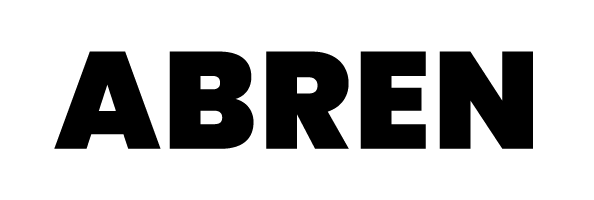|
Getting your Trinity Audio player ready...
|
Debt of Ethiopian State-owned Enterprises (SOEs) declined, yet banking sector suffers from unpaid SOE loans, as privatization stalls.
The creation of the Liability and Asset Management Corporation (LAMC), a financial vehicle, which assumed the bulk of domestic Birr-denominated SOE debt has helped reduce the debt burden to some of Ethiopia’s largest state-owned companies. Money from Ethiopia’s first ever telecom license sale to Safari-com was also used for debt service re-payment to Commercial Bank of Ethiopia (CBE). In order to generate more funding for LAMC, the government floated a second telecom license for sale, opened the door to a partial privatization of Ethio-Telecom, as well as the sale of eight sugar factories.
Government attempts to rescue banking sector and raise capital through privatization of some SOEs has stalled mainly due to ongoing conflict, resulting the withdrawal of outside support to the country. These assets on offer for privatization, besides Ethio-Telecom are less attractive to potential foreign bidders. State jewel, Ethiopian Airline group, which has grown tremendously in recent years is of low risk for insolvency, and thus not on offer for privatization, despite some rumors.
Loss making SOEs such as Ethiopian Electric Power (EEP), Ethiopian Railways Corporation (ERC), and Ethiopian Sugar Corporation (ESC) account for 90% of all Birr-denominated SOE debt (Source: Ethiopian Authorities). These entities pose a high level of fiscal risk. Their debt is mostly held by state owned CBE, which is the only creditor to LAMC, and controls 58% of banking assets in Ethiopia. This nexus between a state-owned CBE, and indebted SOEs poses a key macroeconomic vulnerability. Relatively healthy SOEs besides Ethiopian Airline Group include Ethio-Telecom, Ethiopian Construction works, and Ethiopian Electric Utility.

CBE, which receives preferential treatment by the state, has had the lowest capital reserve requirement of any bank in Ethiopia. Often the bank does not hold any capital against its loan exposure to large SOEs. Close to 90 percent of CBE’s lending is to the three financially weak SOEs, and to LAMC. Although SOEs routinely miss debt service payment to CBE, a government bailout of the bank has not been necessitated. Instead, the bank relies on raising new deposits in order to meet its cash flow needs. However, this mechanism is becoming difficult due to competition from new bank entrants. The government gave operating licenses to 12 new banks since September 2021. Tele-Birr mobile banking, which has had exceptional growth as a deposit institution, thanks to its lean accessibility to consumers is also becoming a fintech competitor in the banking sector. A proposed plan to bring in foreign banks will also increase competition for deposits.

Recently completed Head Quarters of Commercial Bank of Ethiopia towers over Addis Ababa
Although government privatization drive to finance LAMC has stalled, first due to the Covid pandemic, then to conflict, there has been some positive progress to slow SOE borrowing. SOE debt has dropped from close to 30 percent of GDP in 2018 to about 15 percent in 2022 (Source: Ethiopian Authorities). However, this debt has not just disappeared. Birr-denominated SOE debt transferred to the LAMC are now included in government domestic debt burden. State owned Ethiopian Railways Corp is the most externally indebted SOE, with most of its debt owed to china, which agreed to restructure $4 billion of this loan back in 2018.
SOE inefficiencies in Ethiopia are systemic, and wide open to corrupt practices. Ethiopian Sugar Corporation was used to siphon off millions from the banking sector, loans that later were downgraded as “non-performing.” While SOEs provide a comparatively low-cost service to the population, their debt burden is a drag on the banking sector and has recently added to fiscal risk. Off loading SOE debt to LAMC has helped, but now a comprehensive financing strategy is needed for this new entity.

The SOE / Banking Crisis in Ethiopia will indeed be one topic of discussion as the IMF and the National Bank of Ethiopia meet this month. A financial support package worth at least $2 billion is on the line, although Ethiopian authorities had request more than double that amount. Alongside pressure to devalue the birr and bring it in line with the parallel black market exchange rate, the issue of SOEs will certainly be pushed by the fund. The fund will argue exchange rate unification is necessitated by a steep shortfall in foreign currency reserves, enough only to cover one month of imports. This will likely to be resisted by the government.
In 2019, Ethiopia, which agreed to depreciate the birr two percent per month, has since slowed depreciation to less than one percent a month. The parallel black market exchange rate for the Birr is currently near one hundred ETB per one USD. National Bank of Ethiopia has resisted exchange rate depreciation in a highly fragile socio-political context, whereby added inflation pressure threaten vulnerable populations, leading to more instability. The Washington based international financial institutions (IFIs) know pressuring Ethiopia to devalue as well as undertake serious structural change could give rise to significant repetitional risk for the fund.
Ethiopia’s deficit spending was recently exacerbated by withdrawal of external economic support. Western donor countries used this leverage to pressure the government to end the conflict in the northern Tigray region. This has led to a drop in international currency reserves needed to import basic goods such as fertilizer, pharmaceuticals and fuel. With high surrender requirements, the government was forced to place restrictions on all but essential imports, contributing to widespread shortages. It was hoped the Pretoria Peace Agreement between the government of Ethiopia and the TPLF would facilitate external financial support by the IFIs. Despite this prospect, sanctions persist. This month will determine whether Ethiopia can still count on its traditional external backers.












You must be logged in to post a comment.